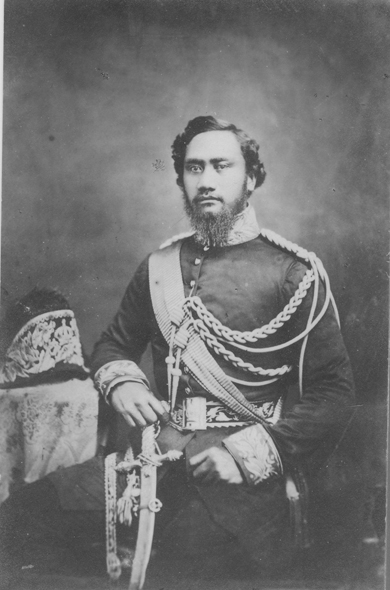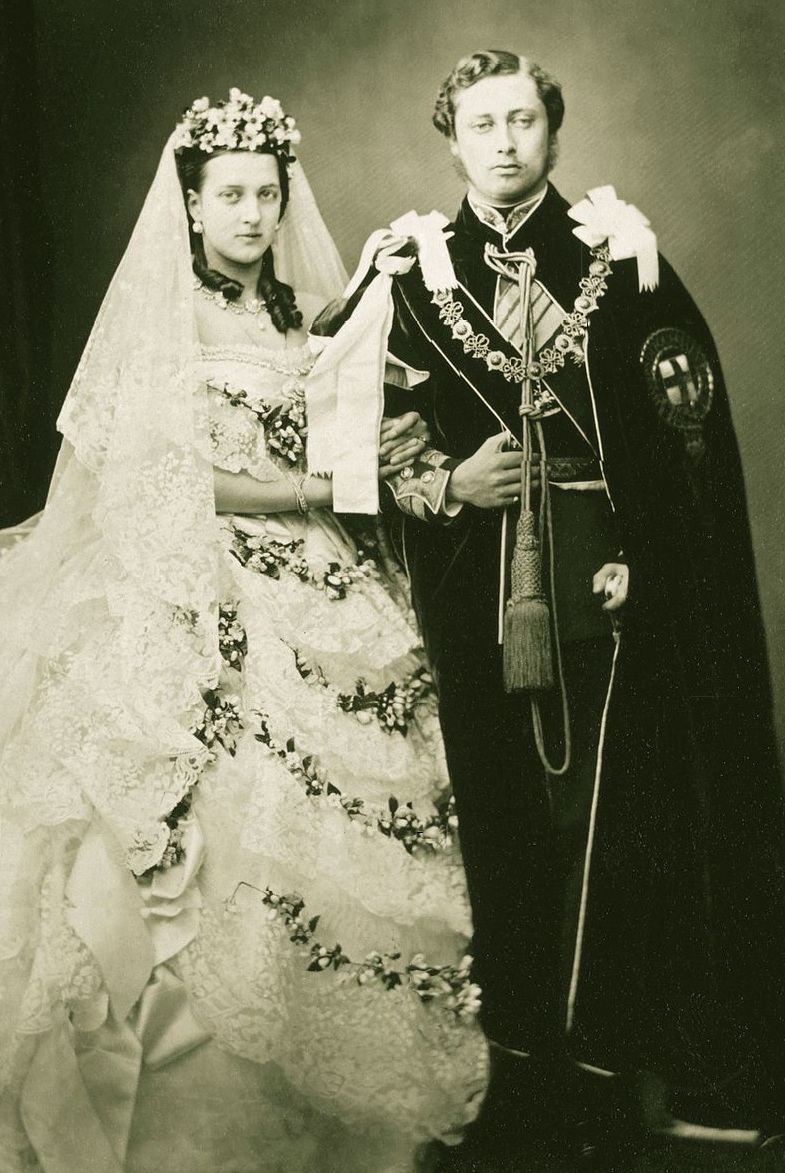© Unofficial Royalty 2024
Lady Anne Hyde, Duchess of York; Credit – Wikipedia
March 12, 1637 – Birth of Lady Anne Hyde, Duchess of York, first wife of James, Duke of York (later King James II of England), at Cranbourne Lodge in Windsor, England
Anne was the daughter of Edward Hyde, later created 1st Earl of Clarendon, an adviser to Charles II, the king in exile in the Netherlands after the English Civil War, and soon became his chief adviser. Charles appointed Hyde Lord Chancellor in 1658. In 1654, while in the Netherlands, Anne Hyde was appointed a maid of honor to Mary, Princess Royal and Princess of Orange, the eldest daughter of King Charles I of England, the widow of Willem II, Prince of Orange, and the mother of the young Willem III, Prince of Orange who would marry Anne’s daughter Mary. Anne was very attractive and stylish and attracted many men, including James, Duke of York, the future King James II of England. On November 24, 1659, Anne and James made a secret marriage in front of witnesses. James and Anne had eight children, but only two survived childhood, and both were Queens Regnant: Queen Mary II and Queen Anne. Anne Hyde never became Queen Consort as she died before her husband became king.
Unofficial Royalty: Lady Anne Hyde, Duchess of York
March 12, 1673 – Death of Margarita Teresa of Spain, Holy Roman Empress, the first of the three wives of Leopold I, Holy Roman Emperor, at the Hofburg Palace in Vienna, then in the Archduchy of Austria; buried in the Imperial Crypt at the Capuchin Church in Vienna
Margarita Teresa was both first cousin and niece of her husband Leopold I, Holy Roman Emperor. Margarita Teresa and Leopold had four children but only one survived to adulthood. Weakened from six pregnancies in six years (four living childbirths and two miscarriages), and four months into her seventh pregnancy, Margarita Teresa died on March 12, 1673, at the age of 21, and was buried in the Imperial Crypt at the Capuchin Church in Vienna.
Unofficial Royalty: Margarita Teresa of Spain, Holy Roman Empress
March 12, 1723 – Death of Anna Christine of Palatine Sulzbach, Princess of Piedmont, first wife of Carlo Emanuele III, King of Sardinia, due to childbirth complications, at the Royal Palace of Turin in Turin, Kingdom of Sardinia, now in Italy; first buried at Turin Cathedral and was moved to the Basilica of Superga in Turin in 1786
Anna Christine was the first of the three wives of Carlo Emanuele of Savoy, Prince of Piedmont, the heir apparent to the Kingdom of Sardina, and, after Anna Christine’s death, Carlo Emanuele III, King of Sardinia. They married in 1722 and had one son who died in early childhood. On March 12, 1723, a few days after giving birth to her son, Anna Christine, aged nineteen, died of childbirth complications.
Unofficial Royalty: Anna Christine of Palatine Sulzbach, Princess of Piedmont
March 12, 1781 – Birth of Frederica of Baden, Queen of Sweden, wife of King Gustav IV Adolf of Sweden, at Karlsruhe Palace in Karlsruhe, Margraviate of Baden now in the German state of Baden-Württemberg
Full name: Friederike Dorothea Wilhelmina
In 1797, Frederica married King Gustav IV Adolph of Sweden and had five children. After a 17-year reign, Frederica’s husband was deposed in 1809, and the couple and their family went to Frederica’s homeland, the Grand Duchy of Baden. However, the couple became incompatible and divorced in 1812. In the divorce settlement, Gustav Adolf renounced all his assets in favor of his mother and his children. He also renounced the custody and guardianship of his children. Two years later, Frederica placed her children under the guardianship of her brother-in-law, Alexander I, Emperor of Russia. Frederica acquired several residences and spent much time at her brother’s court in Karlsruhe, but she also traveled around Germany, Switzerland, and Italy, using the name Countess Itterburg after a ruin in Hesse she had acquired. During her final years, Frederica was often ill and she died from heart disease at the age of only 45.
Unofficial Royalty: Frederica of Baden, Queen of Sweden
March 12, 1821 – Birth of Luitpold, Prince Regent of Bavaria at the Würzburg Residence in Würzburg, Kingdom of Bavaria now in Bavaria, Germany
Full name: Luitpold Karl Joseph Wilhelm Ludwig
Luitpold was the regent and the real ruler of Bavaria from 1886 to 1912, due to the mental incompetency of his nephews, King Ludwig II and King Otto. He was the third son of King Ludwig I of Bavaria and Princess Therese of Saxe-Hildburghausen. In 1844, Luitpold married Archduchess Auguste Ferdinande of Austria and they had four children including Ludwig III, the last King of Bavaria. On June 10, 1886, Luitpold became Prince Regent after his nephew King Ludwig II was declared mentally incompetent. Ludwig II died three days later under mysterious circumstances, and the throne passed to Ludwig’s brother Otto. However, by this time, Otto had also been declared mentally ill, and Luitpold continued as Prince Regent. Luitpold died at the age of 91, after having developed bronchitis. He was succeeded as Regent by his eldest son, who became King Ludwig III the following year, after deposing his cousin King Otto.
Unofficial Royalty: Luitpold, Prince Regent of Bavaria
March 12, 1958 – Death of Ingeborg of Denmark, Princess of Sweden, daughter of King Frederik VIII of Denmark, in Stockholm, Sweden; buried in the royal cemetery in Haga Park, Solna, Sweden
Ingeborg married Prince Carl of Sweden, son of King Oscar II of Sweden, and they were the parents of Queen Astrid of Belgium and Crown Princess Märtha of Norway. Belgian Kings Baudouin and Albert II, Norwegian King Harald V, and the late Grand Duchess Josephine-Charlotte of Luxembourg, the wife of the late Grand Duke Jean of Luxembourg are all grandchildren of Carl and Ingeborg. The royal families of Belgium, Luxembourg, and Norway descend from Carl and Ingeborg. Both Carl and Ingeborg lived long lives. Carl died in 1951 at the age of 90. Ingeborg survived him by seven years, dying on March 12, 1958, at age 79.
Unofficial Royalty: Ingeborg of Denmark, Princess of Sweden
March 12, 1972 – Death of Feodora of Saxe-Meiningen, Grand Duchess of Saxe-Weimar-Eisenach, second wife of Wilhelm Ernst, Grand Duke of Saxe-Weimar-Eisenach, in Freiburg im Breisgau, Germany; buried in Bad Krozingen, Germany
Feodora was the great-granddaughter of Princess Feodora of Leiningen, the half-sister of Queen Victoria of the United Kingdom. In 1910, she married Grand Duke Wilhelm Ernst of Saxe-Weimar-Eisenach, and they had four children. Her marriage was unhappy, and Feodora struggled to cope with the strict etiquette and protocol of the Weimar court. She soon began to throw herself into charity work, working with organizations that helped the poor. After World War I, her husband abdicated in November 1918 and the family went into exile in Heinrichau, Silesia (now Henryków, Poland), where her husband died several years later. When the area fell under Soviet occupation in World War II, the family was again forced to flee, losing their estates and many of their assets. As a means of negotiating with the authorities, Feodora agreed to sign over the Goethe and Schiller Archive, on the condition that it would be converted into a private foundation, and the family’s assets would be returned. Despite the written agreement, the government did not return many of the family’s assets, and the dispute continues to this day. Feodora settled in Freiburg im Breisgau, Germany, where she died on March 12, 1972, at the age of 82.
Unofficial Royalty: Feodora of Saxe-Meiningen, Grand Duchess of Saxe-Weimar-Eisenach
This article is the intellectual property of Unofficial Royalty and is NOT TO BE COPIED, EDITED, OR POSTED IN ANY FORM ON ANOTHER WEBSITE under any circumstances. It is permissible to use a link that directs to Unofficial Royalty.














